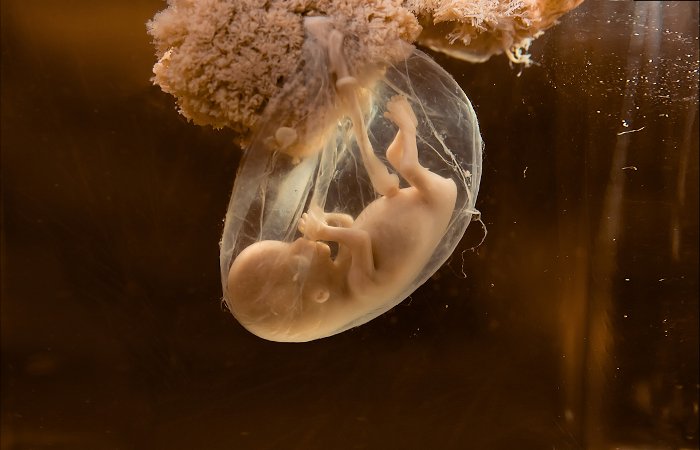Reveal the way the human embryo is formed
Have you ever wondered why our arms, legs or hearts are in that position, not elsewhere?
We all know about the story of sperm eggs, fertilized and become a zygote. The cells begin to divide, then assemble, form, until at some point the bodies and organs of the body are formed. Finally, the tiny cell mass also turned into a miniature creature.
But how do cells know to create a bit of skin here, or a finger there, or grow into a small kidney in the right place?
Basically, a cell needs guidance to determine its fate. Specifically, the cells will signal each other to announce what they will become.
Once identified, the cells continue to differentiate into nerve cells, skin cells . However, the nature of these guidelines is not simple.

The process of embryo formation still has many mysteries to explore.(Photo: Leptospira / Shutterstock.com).
Cell identification occurs by molecular signals between cells , but it can also occur due to the distribution of certain molecules in a cell before division. These molecules are usually proteins or RNA fragments that can affect genes expressed in each cell.
For example, if a mother has many factors that determine the "nerve cell" molecule scattered on the left, after cell division, only the left daughter cell will become a neuron, because because it carries essential determinants.
However, most of the time, pre-embryonic cells actually determine each other's fate through a system called inductive signaling. Cells eject some proteins into their surfaces, informing neighboring cells in turn about where "neighbors" need to become. This can happen through direct contact, or signals can also be sent through empty space between cells.
When it comes to forming specific patterns to develop into body parts, chemical signals become more complex. Cells release different amounts of signaling substances called "morphogens" . They will inform genes in the cell nucleus of conversion, determine which part of the cell group will develop into - nail or kidney.
Interestingly, this knowledge has only recently been discovered. Previously, scientists tried to understand the problem of cell identification in the early 20th century, but the first genes that sent chemical signals were only identified by the embryo researcher. Eddy De Robertis in 1990, in a frog embryo.
Scientists still do not know all about this complex chemical communication mechanism, but they still discover a part of the problem every day."Over the past two decades, De Robertis and other researchers have announced a network of gene organizations that together produce a cocktail of signaling proteins, diffused through an embryo at different concentrations." , researcher Alex Riley writes in Naitilus magazine.
- Equipment for incubating thousands of human embryos at the same time and the future of 'synthesizer' from just one stem cell?
- Embryo species of human hybrid - monkey created in China
- The human embryo has been cloned
- American successfully created embryo hybrid sheep - human
- Reveal the spectacular moment of embryo formation
- For the first time, an embryo has been successfully created, half a half pig
- Embryo production of teratogens - Contrary ideas
- Human embryo production from genes of 3 people
- Swedish scientists controversy when editing genes in human embryos
- The Netherlands produces embryos without eggs and sperm
- Chinese gene embryo-producing anti-HIV virus
- Diamonds hidden deep underground formed from sea water
 Green tea cleans teeth better than mouthwash?
Green tea cleans teeth better than mouthwash? Death kiss: This is why you should not let anyone kiss your baby's lips
Death kiss: This is why you should not let anyone kiss your baby's lips What is salmonellosis?
What is salmonellosis? Caution should be exercised when using aloe vera through eating and drinking
Caution should be exercised when using aloe vera through eating and drinking